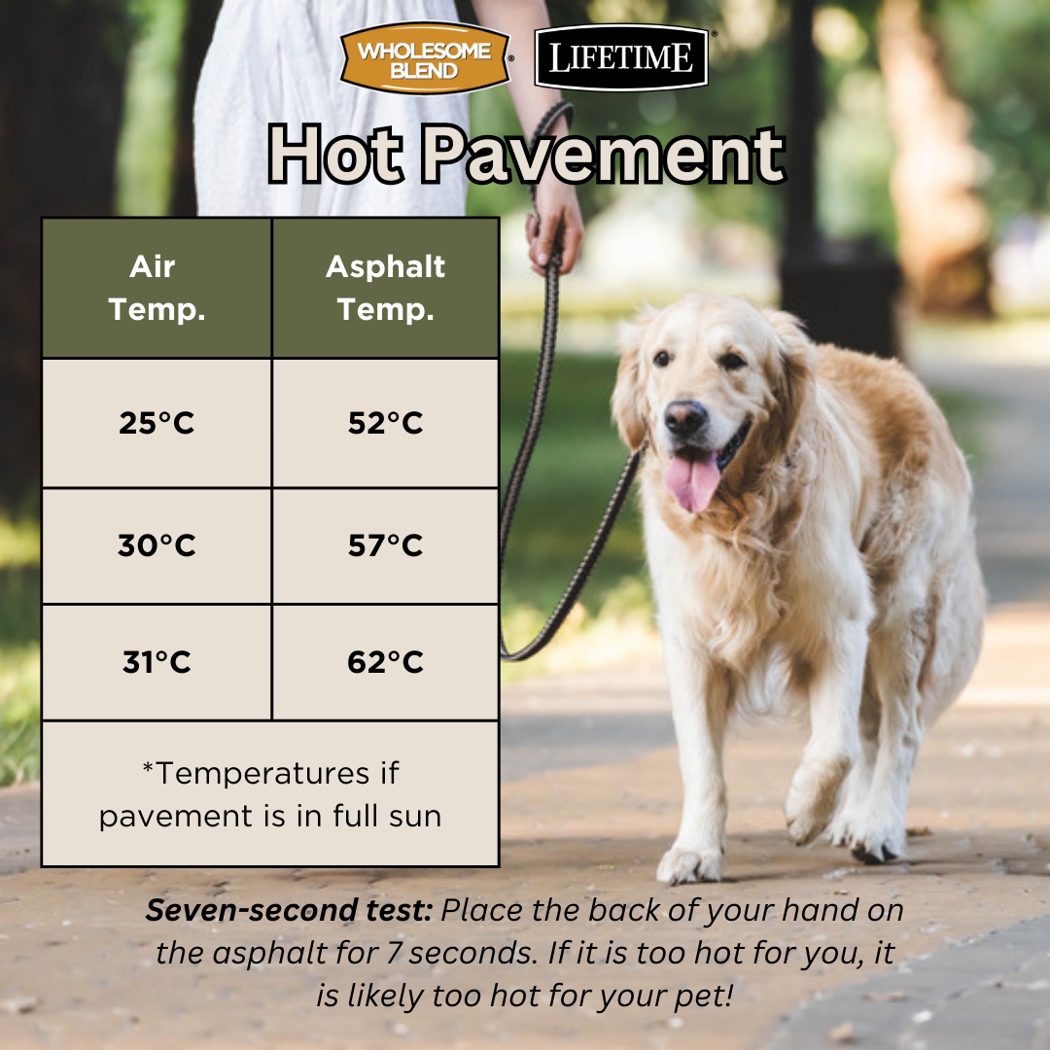How to Protect Your Dogs Paws this Summer
- Dog
- Health
With the summer heat in full swing, it is important to remember that our furry friends need extra care and attention during this season.
Dogs’ paws are sensitive and can face injuries such as blisters, burns on paw pads, and discomfort from walking on hot surfaces. Hot surfaces can also increase your pet's overall body temperature which could lead to heat stroke. We have listed some valuable tips on how to protect your dog’s paws this summer so that your dog can stay happy and healthy all summer season long!

1. Cool and shady walks
When taking your dog out for a walk, avoid walking during the hottest hours of the day. It is recommended to walk your dog during the early morning and late evenings when the pavement is cooler. Peak temperatures to avoid the sun include 10 a.m. and 6 p.m. Before going on a walk, check the pavement using the back of your hand or barefoot and holding for 7 seconds. If it is too hot for you, it is likely too hot for your pet. Walking on shady areas and cooler surfaces such as grass or shady dirt trails are gentler on your dog’s paws. We put together a visual image of how pavement is affected by sun and temperatures below. If too hot out, supplement with indoor playtime.
2. Keep paws moisturized
Consider purchasing pet-friendly paw balms or lotions. Keeping paws moisturized regularly can help to prevent injuries such as cracking, peeling or cuts on the paws. These injuries can make your dog’s paws more susceptible to burns.
3. Paw-Friendly footwear
Dog shoes, booties or paw protectors can help shield your pet’s paws from the heat. They act as a barrier between your dog’s paws and the hot ground to minimize risk of burns and blisters. It is important to note that there is an adjustment period for your dog with dog shoes as some might have a hard time walking in them and not all dogs can get used to them. Peel and stick pads are a great alternative if your dog is unable to get used to shoes. They are thin, flexible and durable.
4. Keep your pet hydrated, take breaks and cool down
Well-hydrated dogs are less likely to suffer from dry, cracked paws and allow for maintaining healthy paw pads. Dehydration is a significant concern during the summer months so be sure your dog always has access to fresh, clean water. Additionally, allow for breaks during walks and consider taking your dog to water at a kiddie pool or dog-friendly swimming spot as a fun way to let your dog cool down.
5. Conduct regular paw inspections
Make it a habit that you are checking daily for signs of damage such as blisters and burns on your dog. Be sure to look out for signs of redness, swelling, cuts or blisters. There are also some symptoms to look out for that could mean your dog has burned paws:
- Licking or chewing feet
- Limping or avoiding walking altogether
- Paw pads are darker than usual
- Visibly damaged, red, swollen, cut or blisters on paws
If you do suspect that your dog has burned their paw pads, bring your dog inside right away (carrying if needed), flush the foot with either cold water or a cold compress and do not let your dog lick the injured pad. Take your dog to the vet if the burn becomes infected or if concerned, as necessary.
By following these simple yet effective tips, your dogs paws can be protected from the heat and allow for overall comfort. Follow the necessary precautions this summer to avoid summer heat paw injuries. We hope you and your dog have a safe and enjoyable summer together. Stay cool, stay hydrated and keep those paws happy!